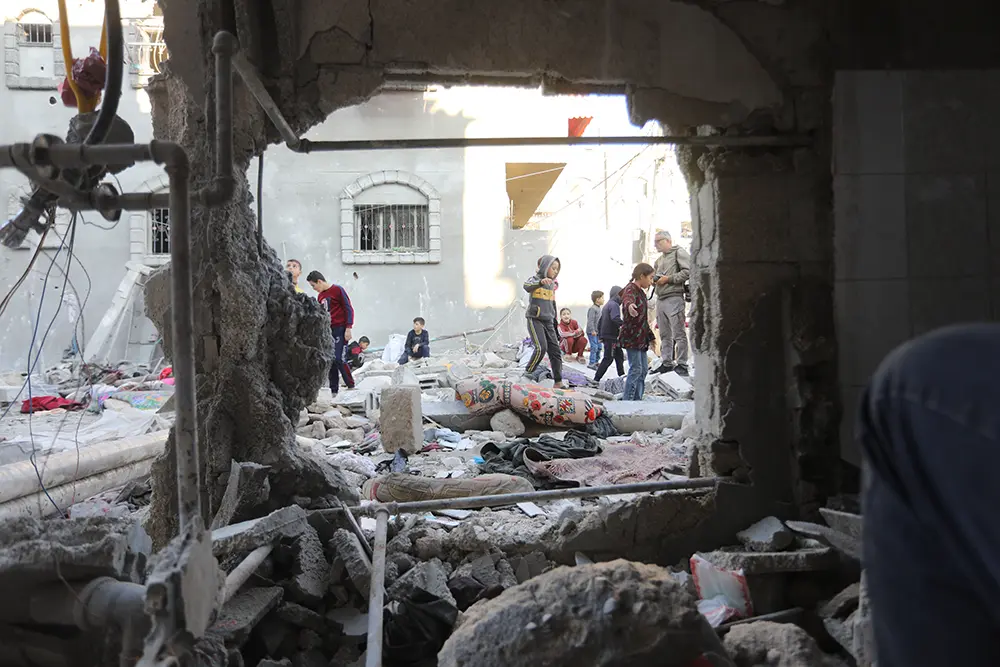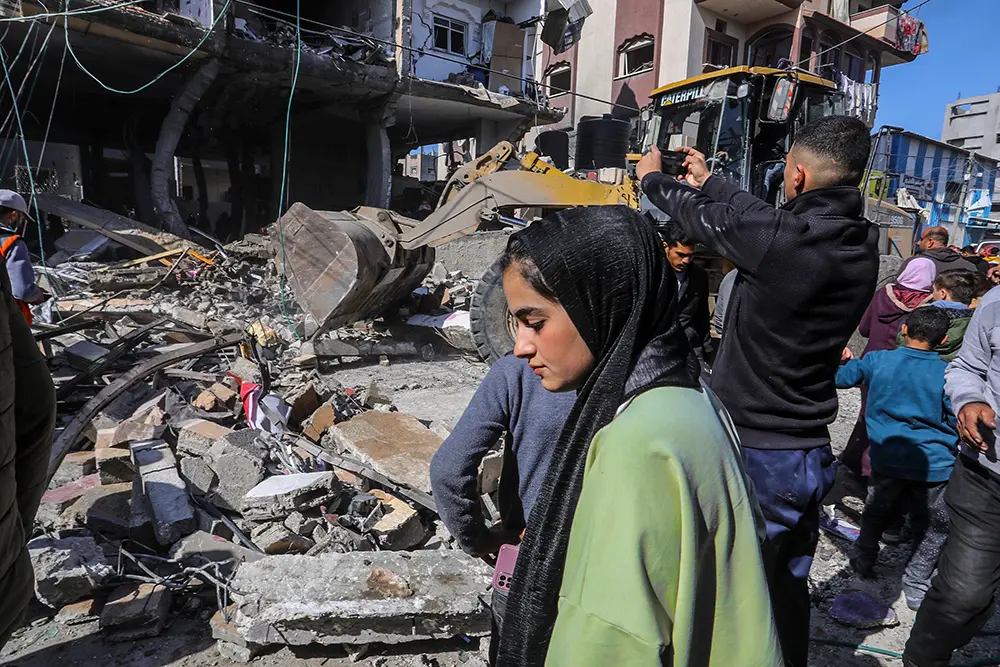The United Nations estimates it could take 14 years to clear the debris in war-torn Gaza, Reuters reports. As a mother, it’s almost impossible to absorb such information after seeing images from the region of displaced families with small children.
The Israeli military advance has left an estimated 37 million tonnes of rubble in the highly urbanised, densely populated territory of Gaza. A fleet of 100 trucks working non-stop would not be able to reclaim all this material in less than ten years, according to Pehr Lodhammar, senior officer at the UN Mine Action Service.
People matter
Normally, recycling construction & demolition waste would not be an emotional issue for me. It’s a solid business model, for sure. A growing one, too, with market analysts expecting the global market to be worth EUR 268 billion by 2030.
I don’t want to focus on the cold, hard numbers here. People matter more. Let’s remember that behind every stone, there is a human story. It may have been part of someone’s kitchen, office or garage. A space where people cooked their favourite meals, did homework or tinkered on cars with friends.
Every material has a history. Objects have past users, homes have past owners. And, as is the case in Gaza, a great many of them are now living among the rubble, searching for food, family and safety. Safety is in short supply.
Post-war legacy
The only positive I can find is that some people are trying to put war waste to good use. I recall coming across a sculpture made entirely from weaponry used in the Mozambique civil war between 1976 and 1992. ‘Peace bird’, created by anti-war artist Gonçalo Mabunda, consists of dismantled AK47s, landmines and rocket launchers. Conscious art such as this has the power to spark conversation while boosting empathy.
Additionally, a UK-based ‘green tech’ start-up called Uplift360 is recycling Kevlar vests worn by soldiers into new products. This type of protective gear is currently incinerated, despite Kevlar being 85 times more expensive than steel.
Thanks to EUR 588 000 of government cash, the ultra-strong synthetic fibre will get a second life in defence, civilian and humanitarian purposes. Applications include:
- aircraft and automotive materials
- flame and heat resistant clothing
- stab resistant clothing
- fibre optics
- tyres
Meanwhile, the Royal Mint has partnered with the UK’s defence ministry to recycle electronic defence equipment. Patented technology developed by Canadian firm Excir will recover copper, gold and other precious metals.
The equipment decommissioned by the armed forces will be processed at a facility in Wales. The Royal Mint is to unveil a state-of-the-art recycling plant for similar applications later this year.
I also read that the Ukrainian Association of Secondary Metals claims there are stockpiles of military scrap worth millions of dollars in the country because of the war with Russia. It estimates 200 000 tonnes of metal are waiting to be processed. A recycling partner has yet to come forward.
Images say more than words
Finally, I’d like to share some photos depicting life in Gaza over the years. Let them be a reminder of how lucky we all are to be alive and well today. That’s not a given.





Don't hesitate to contact us to share your input and ideas. Subscribe to the magazine or (free) newsletter.



